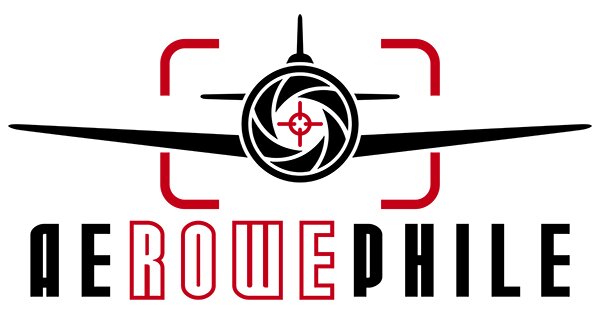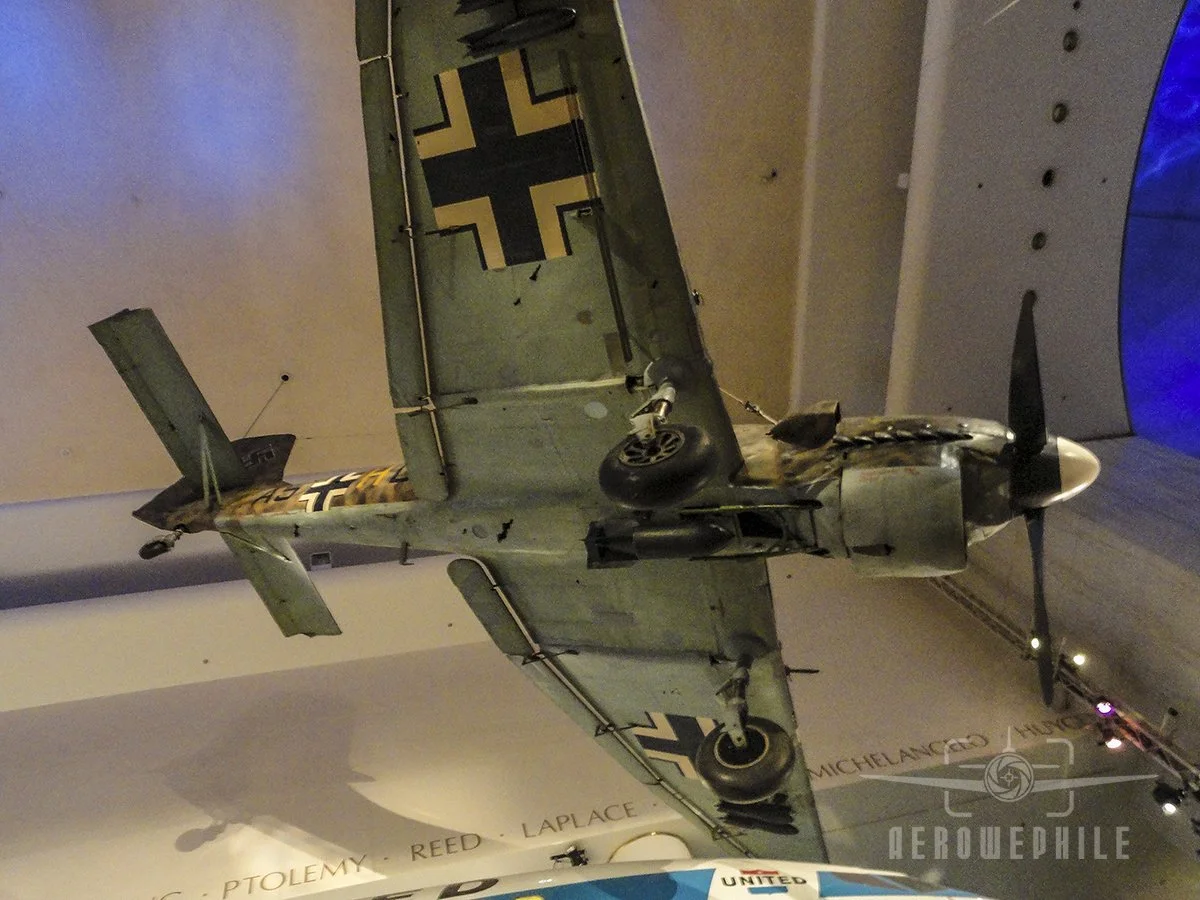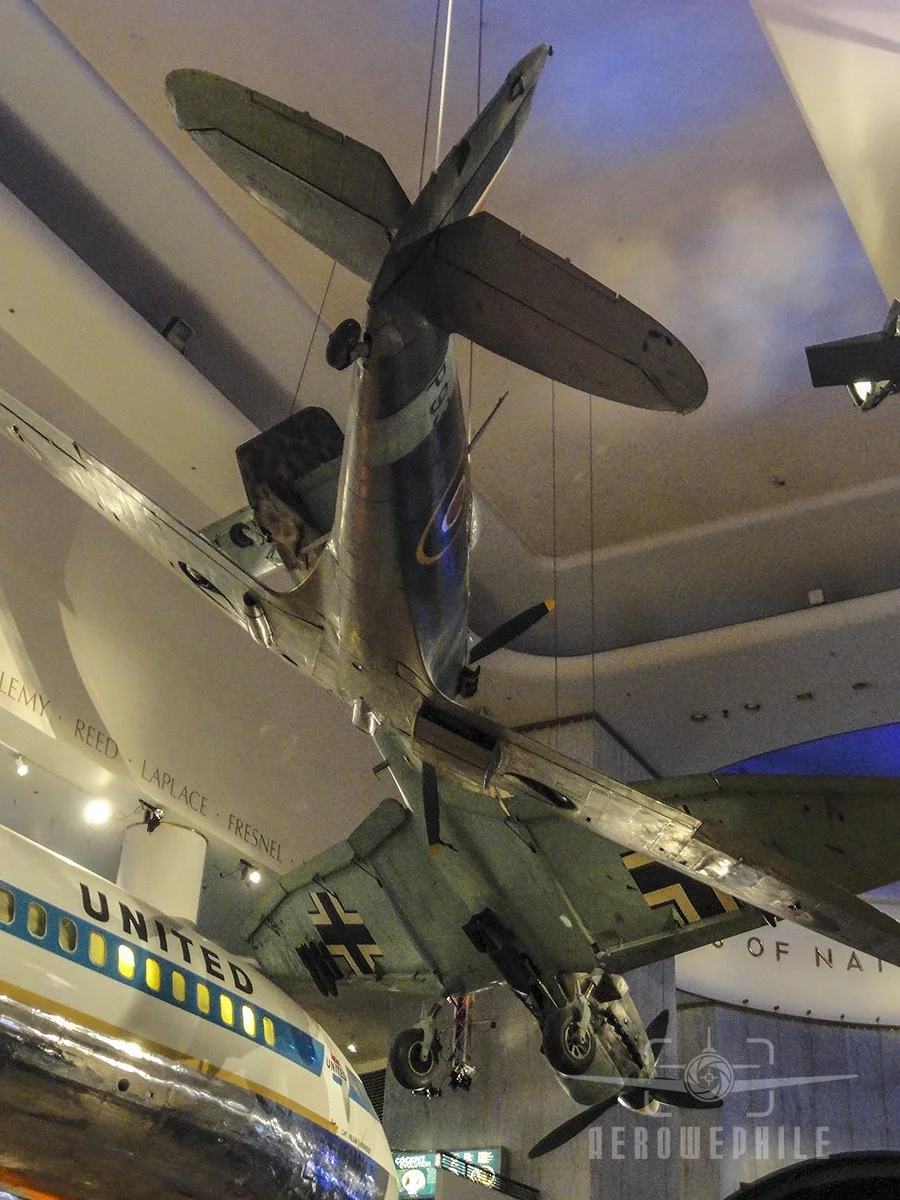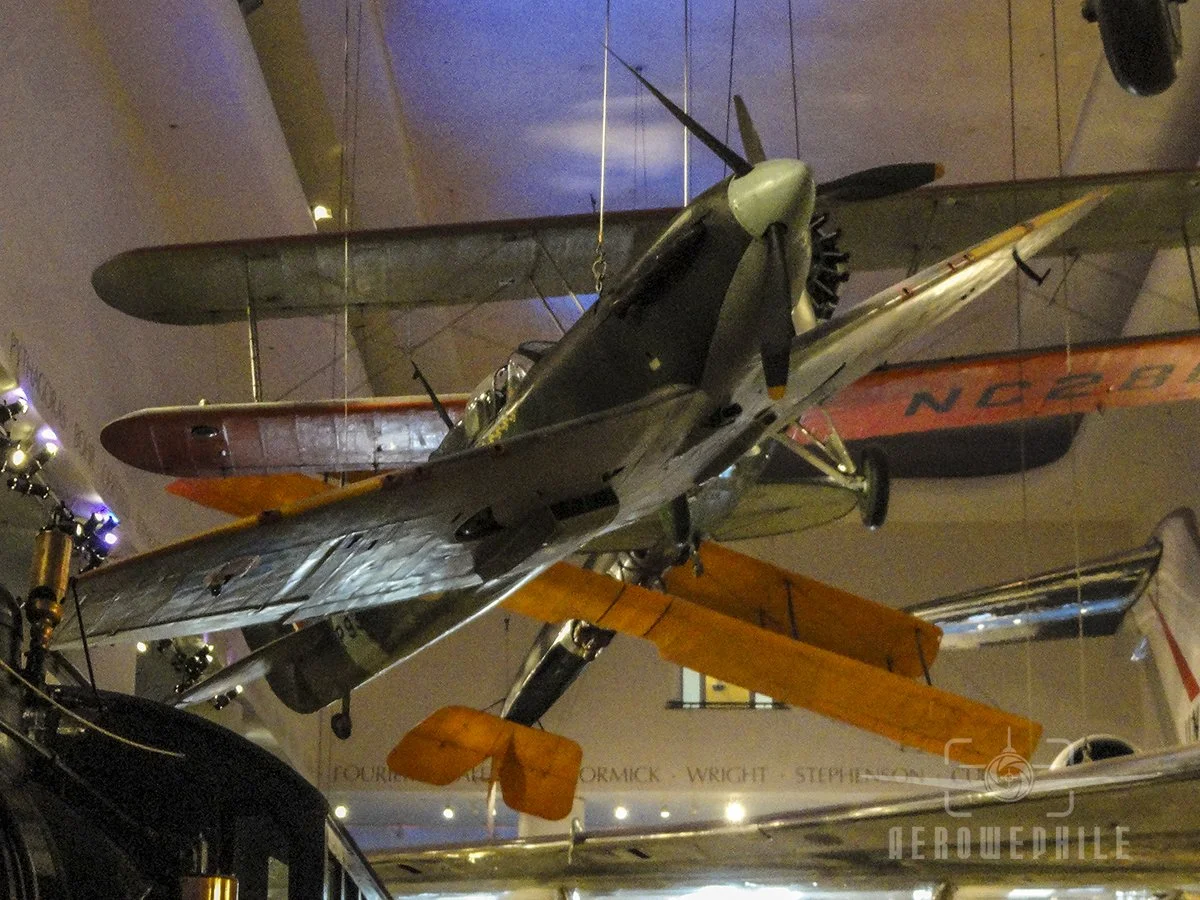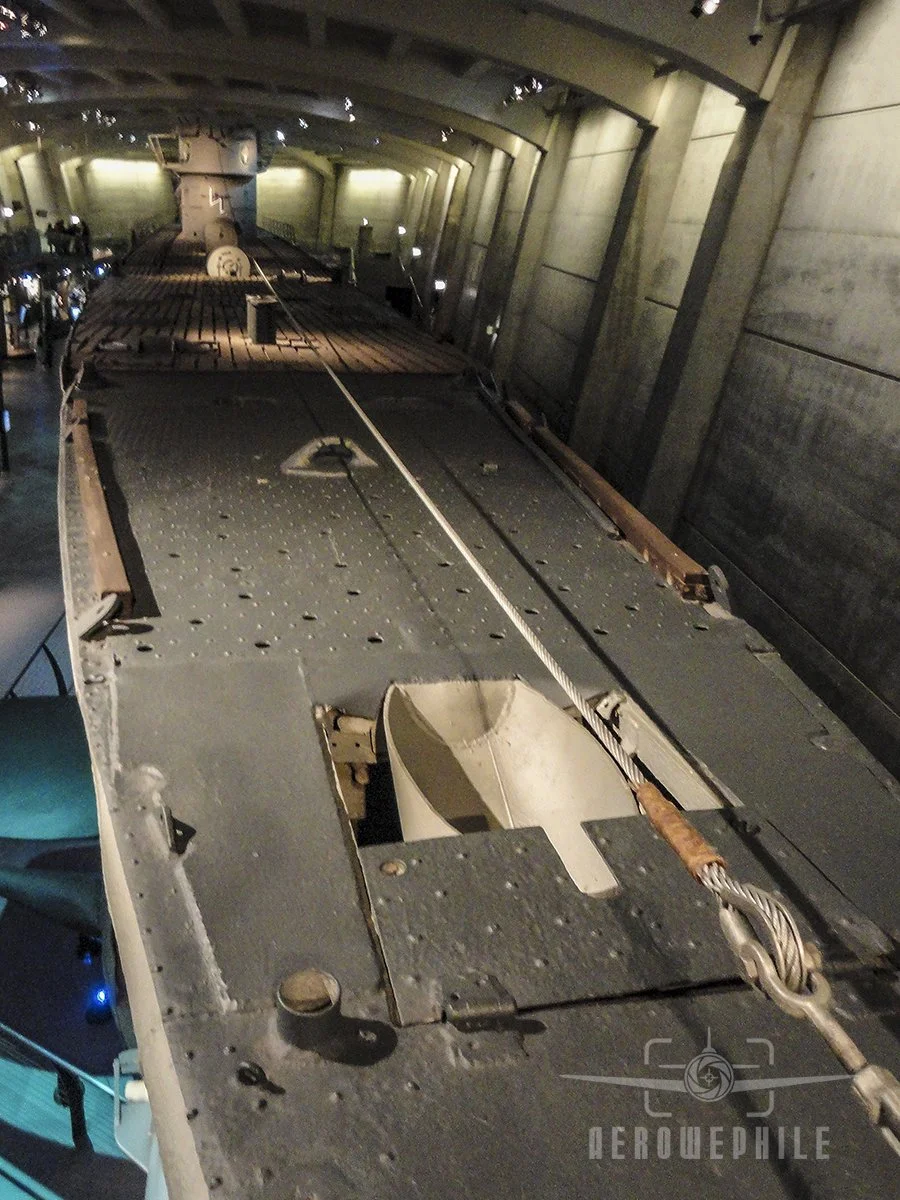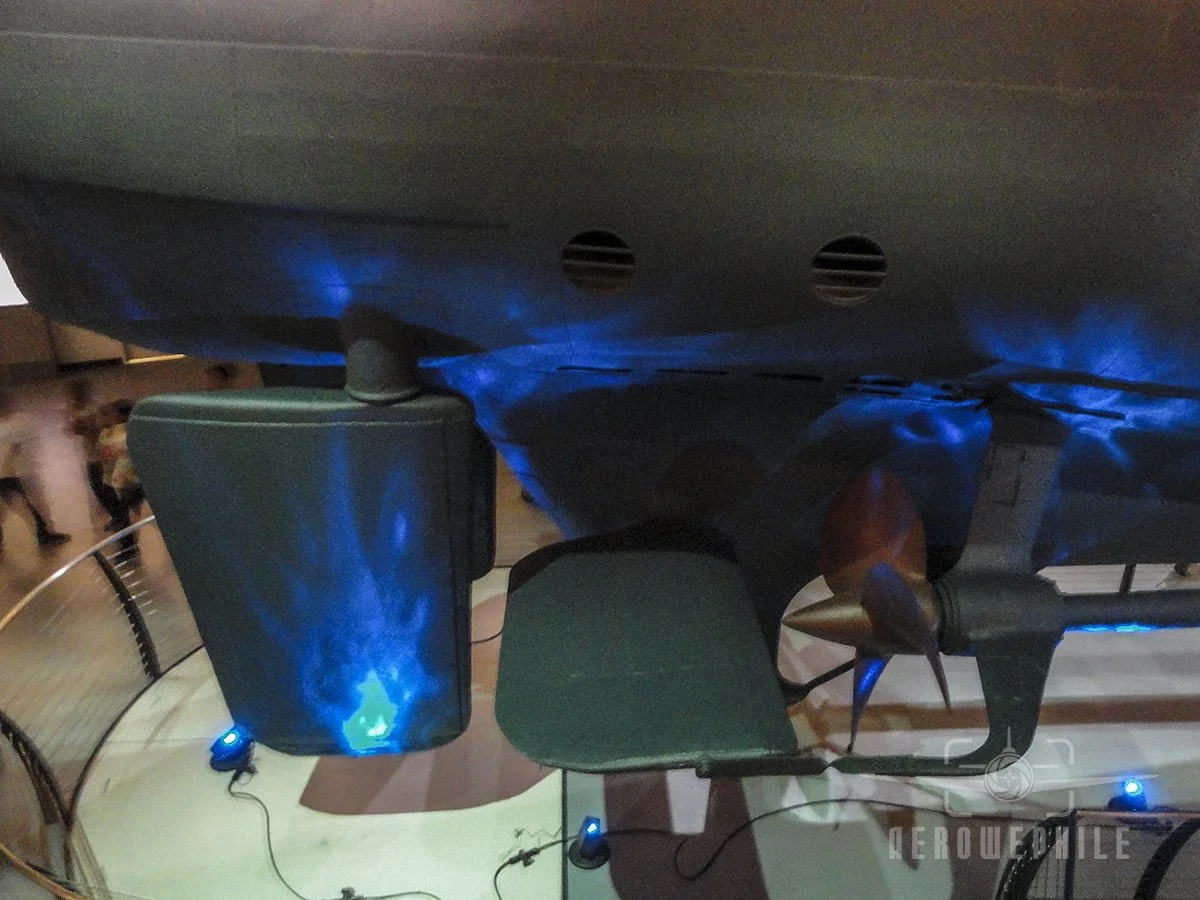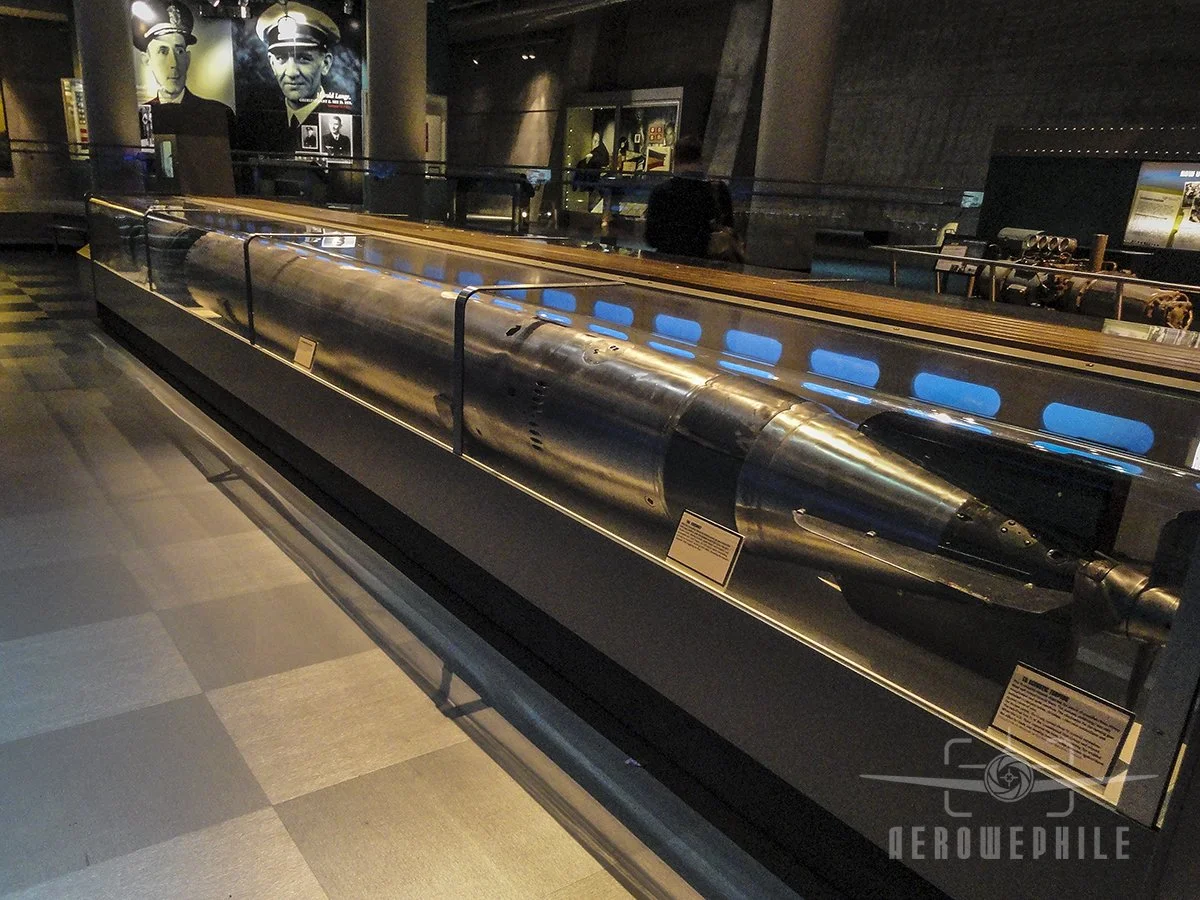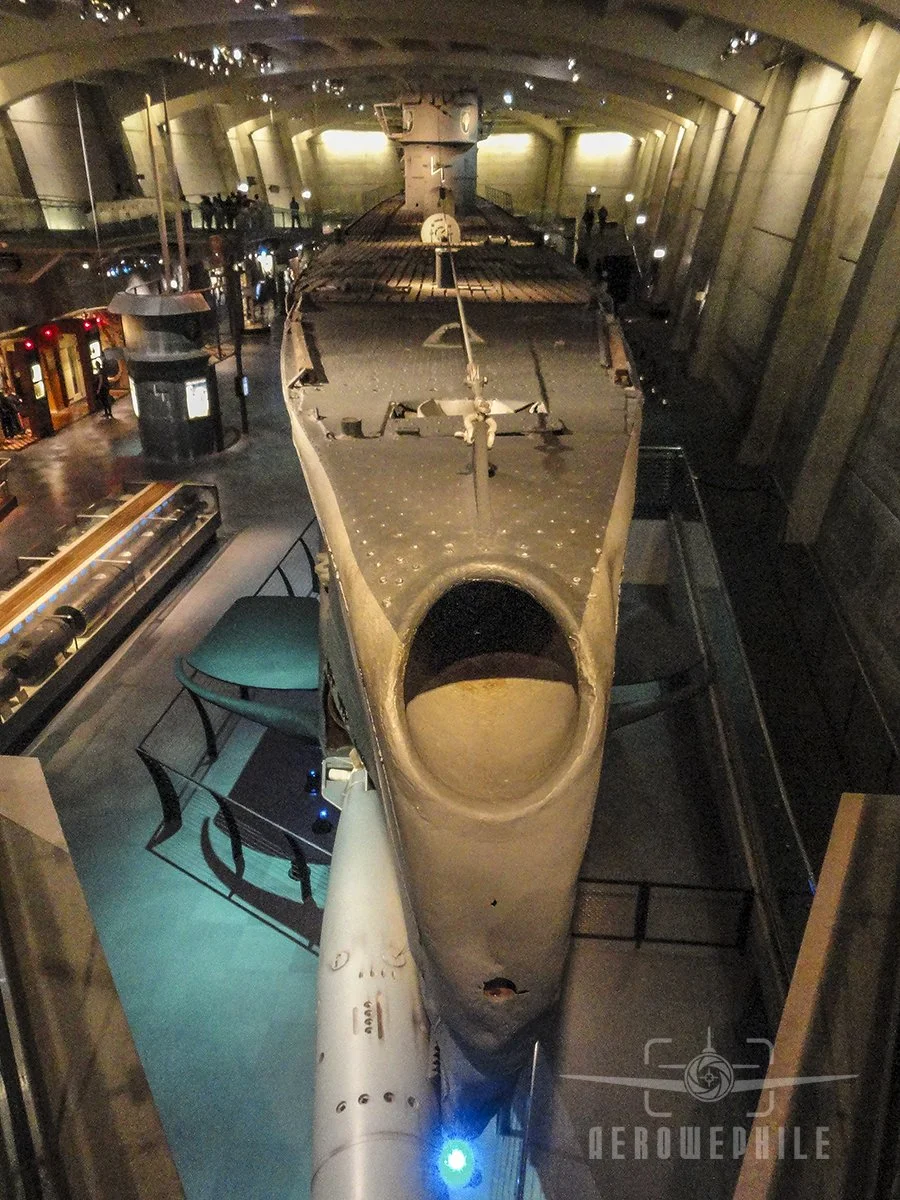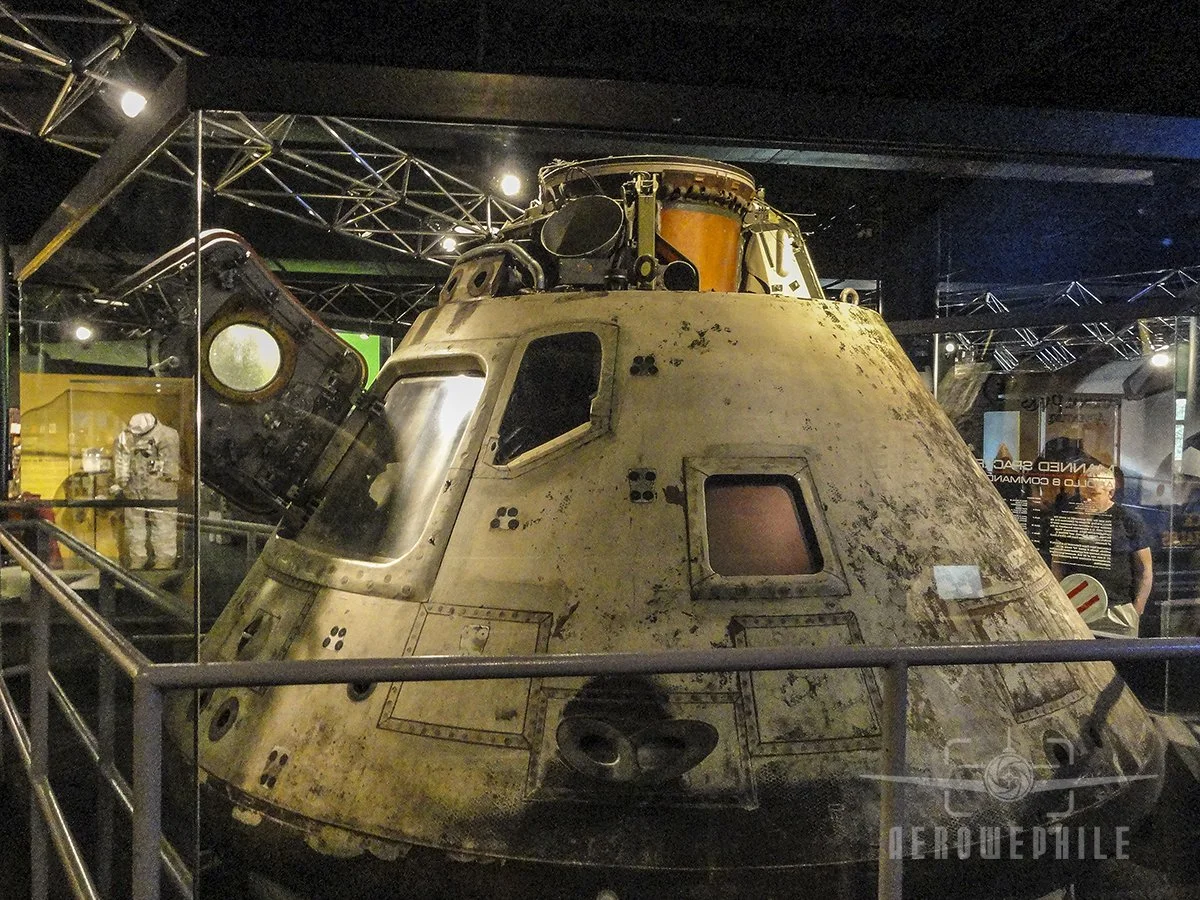
Museum of Science + Industry - Chicago
My son’s high school band were invited to march in the Chicago Saint Patrick’s Day parade and I made the trip with him as a chaperone for the students. Our first stop upon arriving in Chicago was at the Museum of Science + Industry where we had a couple of hours to explore the museum. I brought a small point and shoot camera on the trip and grabbed shots as we hurried through the museum. The museum houses some of the rarer items in the world. One of the few authentic German Junkers Ju-57 dive bombers still in existence. A captured German U-Boat. And two NASA space flown capsules.
10Mar16
Transportation Gallery
The Transportation Gallery is home to several historic aviation vehicles. None more important that one of only two genuine German Ju-87 Stukas on display in the world.
The 1941 Junkers Ju-87R-2 Tropical Stuka is one of two surviving Stukas in the world. Found abandoned in North Africa by British forces in 1941. The Ju-87 was donated by the British government and sent to the U.S. during WWII. It was fully restored by the EAA of Wisconsin and is now displayed in a diving configuration in the Transportation Gallery of the Museum of Science + Industry.
Chasing the German Stuka is a British Supermarine Spitfire Mk. 1A. Other aircraft hanging in the Transportation Gallery includes the Texaco TravelAir Model R Racer, 1928 Boeing 40B biplane, an inverted Curtiss JN-4D “Jenny”, and a United Airlines Boeing 727. Also of note is the Picccard Gondola which set a world altitude record of 61,237ft in 1933.
TRANSPORTATION GALLERY - A vast array of vehicles fill the Transportation gallery as you enter.
TRANSPORTATION GALLERY - The first thing you come face-to-face with is the ultra-rare German Junkers Ju-87 Stuka dive bomber from World War II.
TRANSPORTATION GALLERY - This ultra-rare German Junkers Ju-87 Stuka dive bomber is currently one of only two original Stuka aircraft on display in the world.
TRANSPORTATION GALLERY - The Ju-87 Stuka hangs along with numerous other significant aviation vehicles.
TRANSPORTATION GALLERY - The German Junkers Ju-57 Stuka dive bomber was highly successful at close air support and anti-shipping attacks in the early stages of World War II.
The Ju-87 Stuka was an excellent attack platform. But as with most early bomber designs, it was vulnerable to fighter aircraft. The Supermarine Spitfire Mk.
U-505 Submarine
The only German U-Boat in the United States is on display at the Museum of Science + Industry.
U-505 is a German Type IXC submarine built for Germany’s Kriegsmarine during World War II. It was captured by the U.S. Navy on June 4th, 1944 off the western coast of Africa. The U-505 was towed to Bermuda in secret where the U.S. Navy declared its capture Top Secret in order to prevent the Germans from discovering its capture. In 1954, U-505 was donated to the Museum of Science + Industry where it became one of four U-boats that survive as museum ships in the world.
Henry Crown Space Center
The Henry Crown Space Center showcases NASA’s Aurora 7 capsule from the Mercury Program and the Apollo 8 module
The Aurora 7 capsule sat atop the Mercury-Atlas 7 rocket that was launched on May 24th, 1962. This was the fourth crewed flight of Project Mercury and was piloted by astronaut Scott Carpenter. He was the sixth person to fly in space. Carpenter flew in space for 4 hours, 56 minutes and 5 seconds in the Aurora 7 capsule. Making three orbits around the Earth.
Apollo 8 was the first crewed spacecraft to leave low Earth orbit and the first human spaceflight to reach the Moon. Three astronauts - Frank Borman, James Lovell, and William Anders - made the journey over a six day period from December 21-27, 1968. These astronauts were the first humans to personally witness and photograph the far side of the Moon and made the the famous Earthrise photograph.
AURORA 7 CAPSULE - Launched May 24th, 1962 into space aboard the Mercury-Atlas 7 rocket. This was the fourth crewed flight of Project Mercury. The Aurora 7 Capsule was piloted by astronaut Scott Carpenter. He was the sixth human to fly in space.
APOLLO 8 MODULE - The first crewed spacecraft to leave low earth orbit and the first human spaceflight to reach the Moon.
APOLLO 8 MODULE - The crew orbited the Moon ten times without landing, and then departed safely back to Earth.
APOLLO 8 MODULE - Three astronauts - Frank Borman, James Lovell, and William Anders - were the first humans to personally witness and photograph the far side of the Moon and took the famous "Earthrise" photo.
APOLLO 8 MODULE - Heat shield cutaway exposing the structures underneath.

